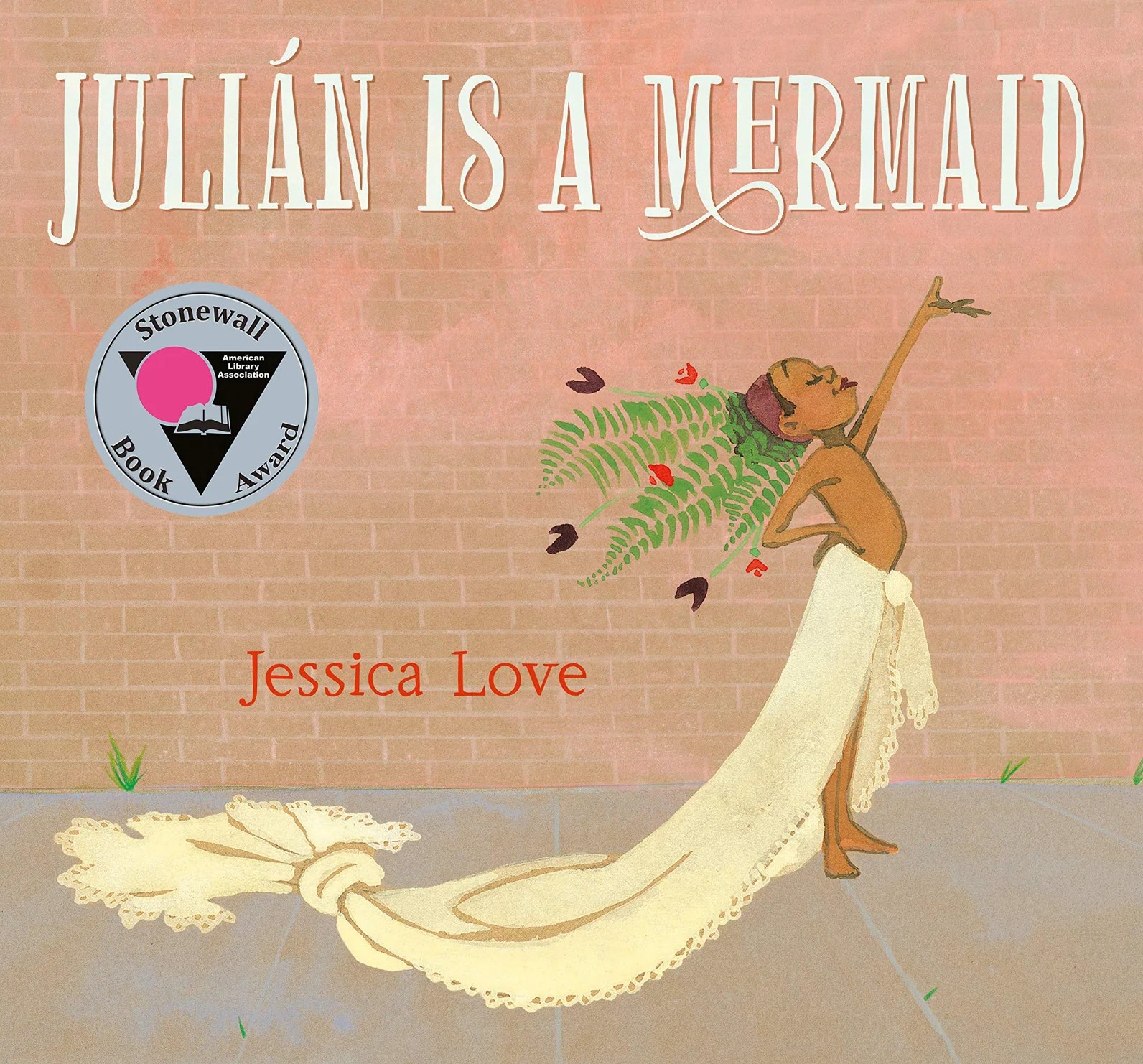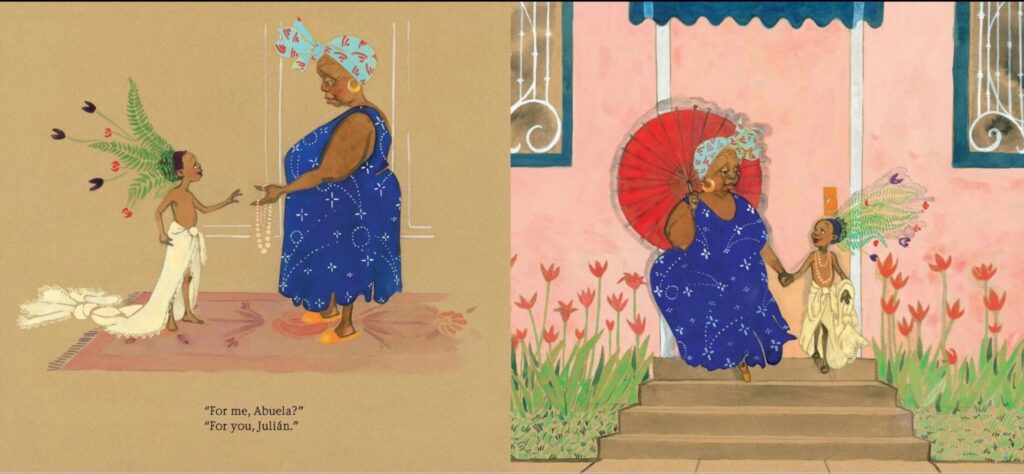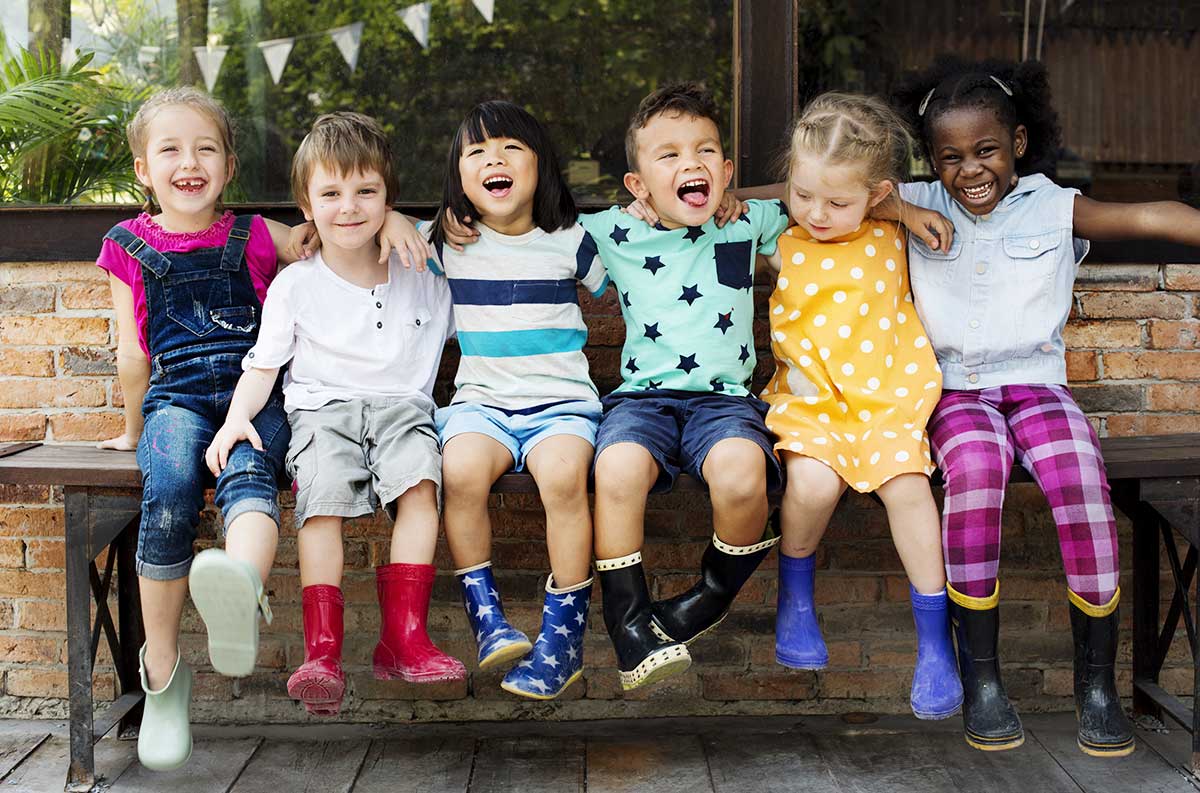
Inclusive Children's Book Teaching Guide
Julián is a Mermaid
What is this book about?
While riding the subway home from the pool with his abuela one day, Julián sees three women wearing mermaid costumes. Their hair billows in brilliant hues, their dresses end in fishtails and their joy is contagious. This exuberant trio fills Julián with wonder and a desire to dazzle the world.
When Julián gets home after this magical encounter, all he can think about is dressing up in his own fabulous mermaid costume: a butter-yellow curtain for his tail, the fronds of a potted fern for his headdress. But what will Abuela think about the mess that he makes? Even more important, what will she think about how Julián sees himself?
Mesmerizing and full of heart, Julián is a Mermaid—which won a Stonewall Award in 2019—is a jubilant celebration of identity, individuality and self-love.
Who is depicted in this book?
- Children or adults who transcend gender stereotypes
- Adults who see and validate a child’s identity
What early childhood themes and concepts does this book explore?
- Dressing up, pretend play and imagination
- People and places in a city neighborhood
How does this book support anti-bias education?
Julián—the book's protagonist—has a strong sense of self and a supportive abuela. Teachers can use these story elements to generate a discussion about how children express their identities and how adults nurture and support those identities.
Depending on how the book is shared or used—and the developmental level of the children—the images and text may be used to support the following core goal from the book, Anti-Bias Education for Young Children and Ourselves:
Identity—Teachers will nurture each child’s construction of knowledgeable and confident personal and social identities so that children will demonstrate self-awareness, confidence, family pride, and positive social identities.
How can this book be used to meet early childhood learning standards?
For all ages
Use Julián is a Mermaid to meet early childhood literacy standards
For children from birth to age three
Teaching suggestion: Point out the people, places and sounds that Julian and his abuela encounter as they explore the city.
What Illinois Early Learning Guideline does this meet for children from birth to age three?
Developmental DomainLanguage Development, Communication and Literacy
Standard: Early LiteracyChildren demonstrate interest in and comprehension of printed materials.
Indicators for children:
- Points or makes sounds while looking at picture books (Birth–9 months)
- Points to pictures in a book and reacts (7–18 months)
- Points to familiar pictures and actions in books (16–24 months)
- Expresses what happens next when reading a familiar book with a caregivers (21–36 months)
Teaching suggestion: Incorporate dress-up materials into a shared reading of Julián is a Mermaid.
What Illinois Early Learning Guideline does this meet for children from birth to age three?
Developmental DomainCognitive Development
Standard: Creative ExpressionChildren demonstrate the ability to convey ideas and emotions through creative expression.
Indicators for children:
- Imitates basic movements during an activity (16–24 months)
- Plays dress-up and invites caregiver(s) to play along (21–36 months)
For preschoolers (ages three to five)
Teaching suggestion: Discuss the ways that Julián expresses himself creatively as the story unfolds. Provide a variety of materials and spaces and validate the children as they express themselves through drama, music or other artistic endeavors.
What Illinois Early Learning and Development Standards does this meet for preschoolers?
The Arts Standard26BUnderstand ways to express meaning through the arts.
Benchmark 26.B.ECa:
Use creative arts as an avenue for self-expression.
Teaching suggestion: Talk about the different depictions and meanings of mermaids in the book.
What Illinois Early Learning and Development Standards does this meet for preschoolers?
Language Arts Standard1EUse increasingly complex phrases, sentences and vocabulary.
Benchmark 1.E.ECb:
Exhibit curiosity and interest in learning new words heard in conversations and books.
Teaching suggestion: During one part of the story, Julián is concerned about his abuela's reaction to his costume. To generate discussion about Julián's feelings, ask the following questions: "What is Julián worried about and why? What does his abuela seem to be thinking? What clues can we look for—and how does this situation turn out?"
What Illinois Early Learning and Development Standards does this meet for preschoolers?
Language Arts Standard2BRecognize key ideas and details in stories.
Benchmark 2.B.ECa:
With teacher assistance, ask and answer questions about books read aloud.
See inside this book.

What other resources are available?
Visit the author’s website to learn more about her work.
